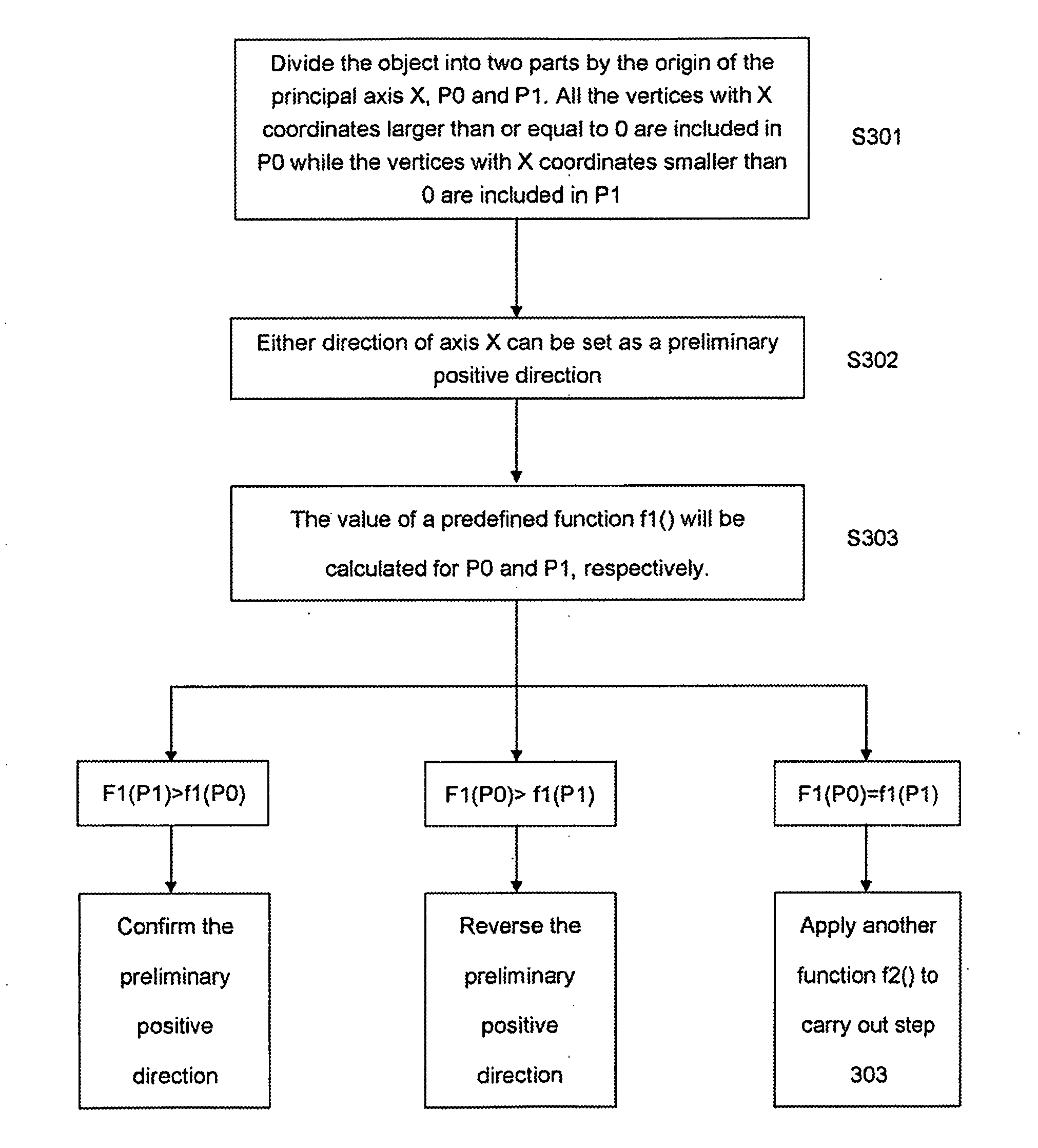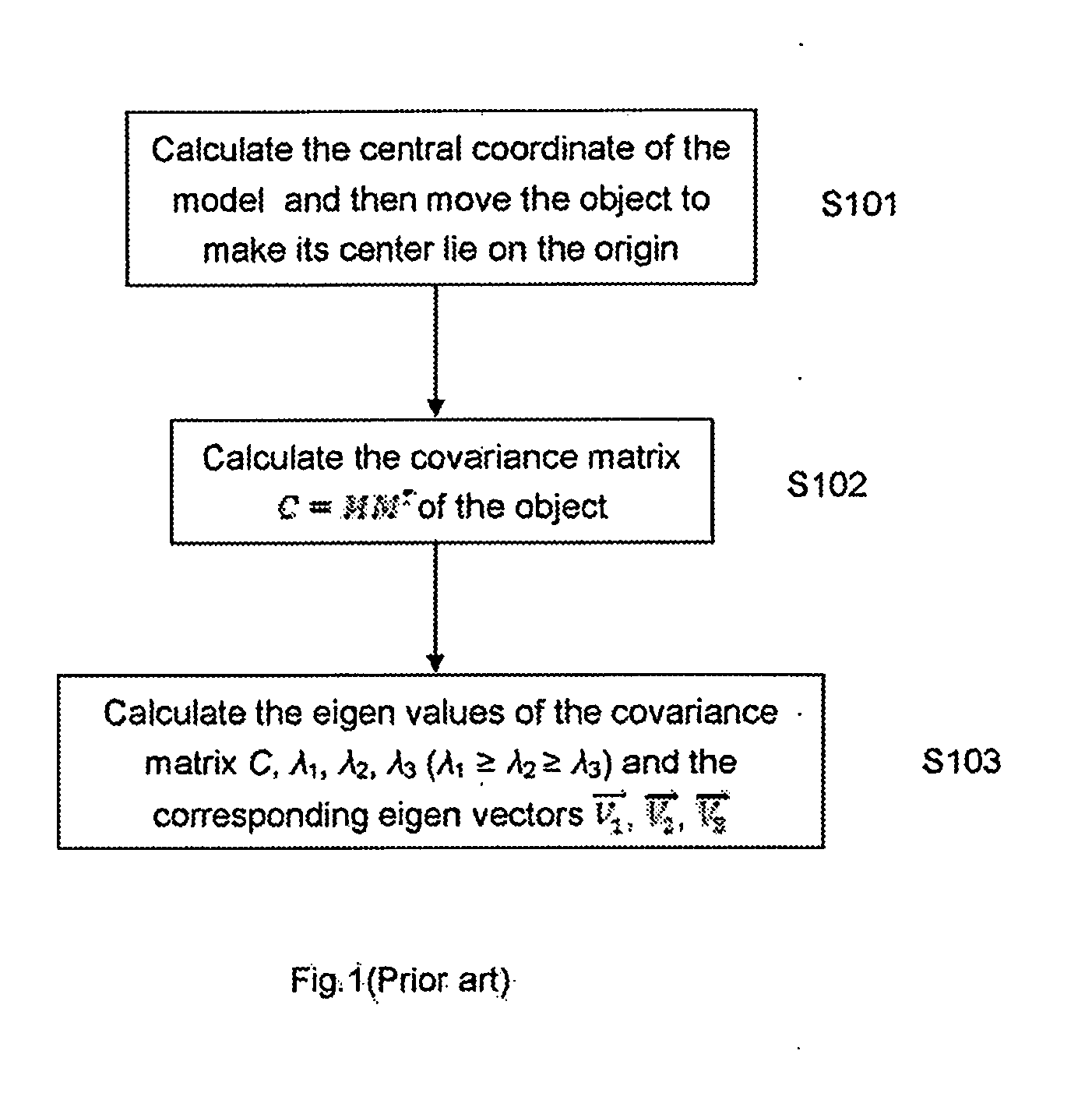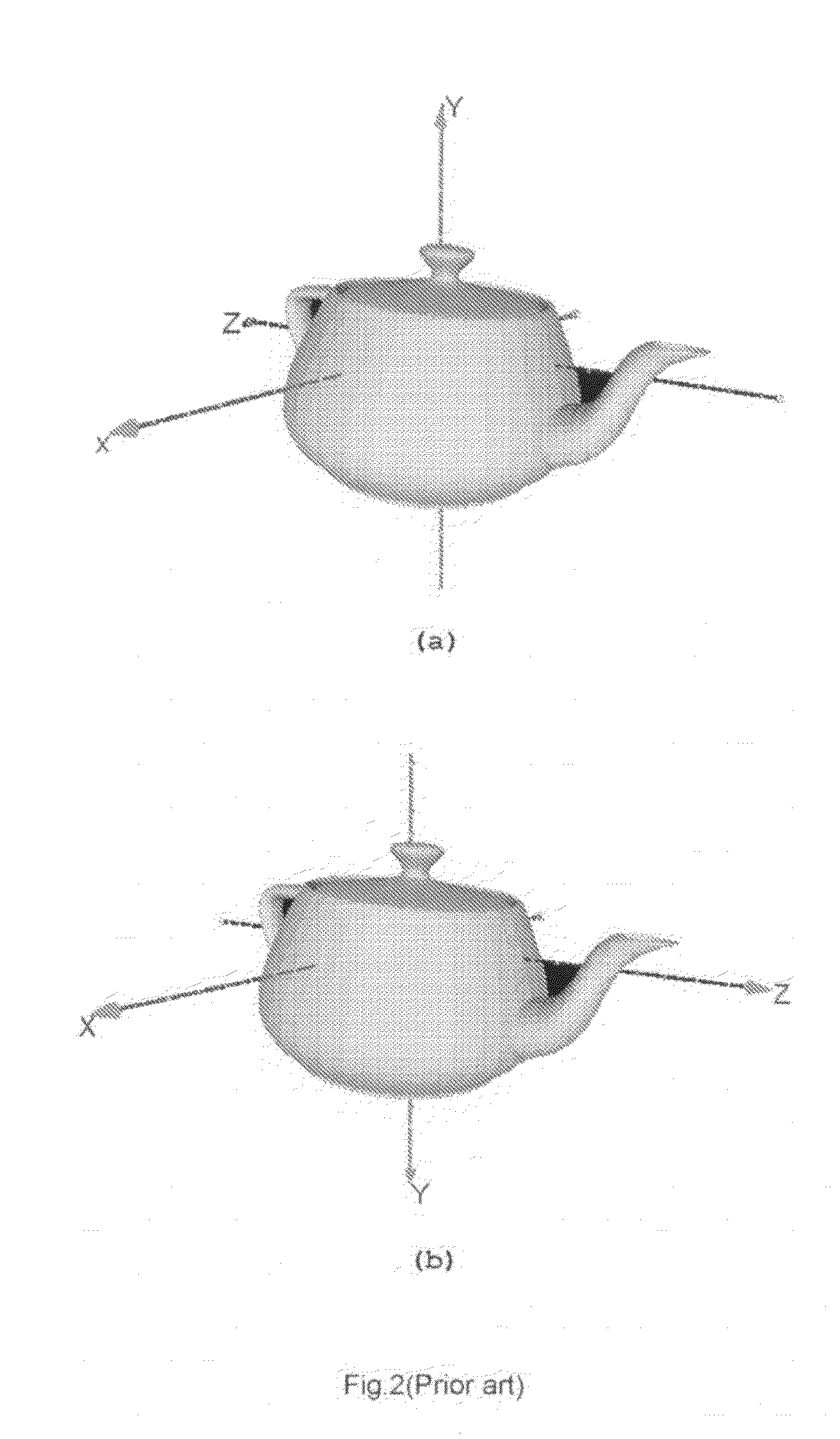Method for setting and determining directions of principal axes of 3D object
a technology of principal axes and 3d objects, applied in the field of computer graphics, can solve the problems of inefficiency, unclear direction of eigen vectors, and inability to determine the positive direction of the principal axes of 3d objects in traditional pca,
- Summary
- Abstract
- Description
- Claims
- Application Information
AI Technical Summary
Benefits of technology
Problems solved by technology
Method used
Image
Examples
Embodiment Construction
[0023]Embodiments of the present invention will now be described in detail in conjunction with the drawings. In the following description, some detailed descriptions of known functions and configurations may be omitted for conciseness.
[0024]According to an embodiment of the present invention, for purpose of uniquely and quickly determining the directions principal axes of an object in a 3D model, a method for setting the directions of principal axes of a 3D object is provided, wherein a set of rules for the directions of principal axes of X, Y and Z of the object in the 3D model are setted as follows:
[0025]a) For each of any two principal axes, axes X and Y for example, setting the direction of the principal axis as a function of at least one predefined function, with which the result calculated of the 3D object for the vertices in the positive half space of the principal axis is smaller than or equal to result for the vertices in the negative half space of the principal axis, where...
PUM
 Login to View More
Login to View More Abstract
Description
Claims
Application Information
 Login to View More
Login to View More - R&D
- Intellectual Property
- Life Sciences
- Materials
- Tech Scout
- Unparalleled Data Quality
- Higher Quality Content
- 60% Fewer Hallucinations
Browse by: Latest US Patents, China's latest patents, Technical Efficacy Thesaurus, Application Domain, Technology Topic, Popular Technical Reports.
© 2025 PatSnap. All rights reserved.Legal|Privacy policy|Modern Slavery Act Transparency Statement|Sitemap|About US| Contact US: help@patsnap.com



